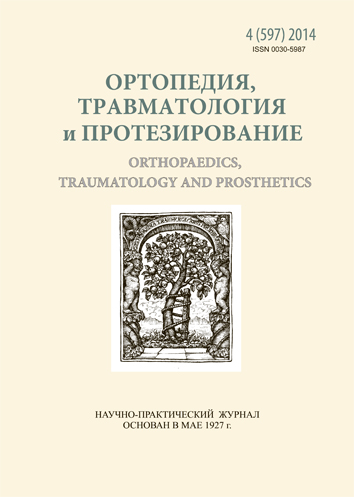The circumstances of the pelvic injuries in cases of multisystem damages
DOI:
https://doi.org/10.15674/0030-59872014480-84Keywords:
polytrauma, concomitant pelvic injury, traumatism mechanisms and circumstancesAbstract
Fractures and disruptions of the pelvic ring especially when combined with fractures of other bones of the skeleton and internal injuries cause severe illness and often lead to death. Objective: To study clinical and nosological indicators of combined pelvic injuries. Methods: The medical records of 400 patients with multiple organ and systemic injuries were analyzed treated at the Ternopil University Hospital in 2008–2012 were analyzed. Among them prevailed men (76.3 %). For rank distributions we used nonparametric correlation analysis with the definition of the Pearson’s polychoric indicator of connection. Based on the analysis performed pelvic trauma in cases of multiple organ and systemic damages recorded 45 victims among which men were twice as much as women. Results: It was found that the more often concomitant pelvic damages in polytrauma cases were obtained as a result of a direct blow and the combined mechanisms of injury. Wherein the most common combination of concomitant injuries was trauma of pelvis, head, chest and skeletal trauma. Frequent cause of polytrauma and concomitant pelvic injuries were road traffic accidents (RTA) — 67.7 %. During retrospective analysis it was found that the distribution of combinations of injuries of the pelvis and other anatomical and functional areas significantly depends on the circumstances of injury. In particular, in case of RTA pelvic injuries frequently combined with craniocerebral (80.0 %) and skeletal (about 70.0 %) ones. At home accidents pelvic damages more often accompanied by skeletal (85.7 %) and traumatic brain (50.0 %) injuries. Conclusion: polytrauma is a severe medical and social problem which is now becoming rampant. The most common cause of polytrauma and concomitant pelvic injuries is an a RTA.
References
- Pelvic fractures in polytrauma: Which classification system better predicts hemodynamics instability / J. Cortina Gualdo, D. Barastegui Fernandez, J. Teixidor Serra [et al.] // European Orthopaedics and Traumatology. — 2013. — № 4 (1). — Р. 35–39.
Downloads
How to Cite
Issue
Section
License
Copyright (c) 2014 Sergey Guriev, Andrey Tsvyakh

This work is licensed under a Creative Commons Attribution 4.0 International License.
The authors retain the right of authorship of their manuscript and pass the journal the right of the first publication of this article, which automatically become available from the date of publication under the terms of Creative Commons Attribution License, which allows others to freely distribute the published manuscript with mandatory linking to authors of the original research and the first publication of this one in this journal.
Authors have the right to enter into a separate supplemental agreement on the additional non-exclusive distribution of manuscript in the form in which it was published by the journal (i.e. to put work in electronic storage of an institution or publish as a part of the book) while maintaining the reference to the first publication of the manuscript in this journal.
The editorial policy of the journal allows authors and encourages manuscript accommodation online (i.e. in storage of an institution or on the personal websites) as before submission of the manuscript to the editorial office, and during its editorial processing because it contributes to productive scientific discussion and positively affects the efficiency and dynamics of the published manuscript citation (see The Effect of Open Access).














